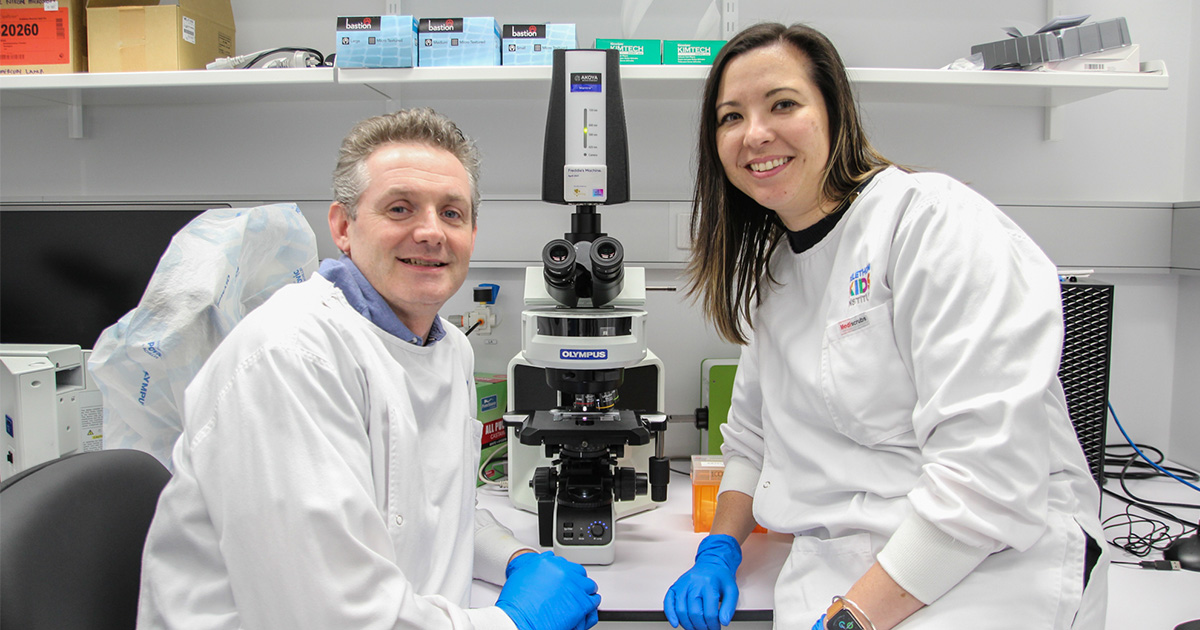Search
News & Events
New imaging equipment to boost children's cancer researchA cutting edge cancer imaging facility will help specialist children's cancer researchers at Perth's Telethon Institute for Child Health Research.

News & Events
Finding new treatments for rare brain cancers in infantsThe WA Kids Cancer Centre has secured $1.1 million in funding from the Medical Research Future Fund’s (MRFF) Paediatric Brain Cancer Research Stream 2 to develop more effective and less toxic treatments for rare brain cancers in infants.
Research
MYCN sensitizes neuroblastoma to the MDM2-p53 antagonists Nutlin-3 and MI-63We hypothesized that reactivation of p53 by inhibition of its negative regulator will result in p53-mediated growth arrest and apoptosis.
Research
MEIS proteins as partners of the TLX1/HOX11 oncoproteinAberrant expression of the TLX1/HOX11 proto-oncogene is associated with a significant subset of T-cell acute lymphoblastic leukemias...

Research
The Childhood Leukemia International ConsortiumThe Childhood Leukemia International Consortium (CLIC) was established in 2007 to promote investigations of rarer exposures, gene-environment interactions...
Research
Pediatric Brain Tumors: Innovative Genomic Information Is Transforming the Diagnostic and Clinical Landscape.This article summarizes data from collaborative group and institutional trials that have advanced the science of pediatric brain tumors.
Research
Cross-presentation of cutaneous melanoma antigen by migratory XCR1+CD103− and XCR1+CD103+ dendritic cellsThis report provides new insight into the functional specialization within the broad network of dendritic cells that are responsible for skin immunosurveillance
Research
The Immune Response to Skin Trauma Is Dependent on the Etiology of Injury in a Mouse Model of Burn and Excision.This article investigates the impact of burn & excisional injury on the immune system.
Research
Childhood and parental diagnostic radiological procedures and risk of childhood brain tumorsWe found no evidence of positive associations between risk of childhood brain tumours overall and childhood or parental pre-pregnancy radiological procedures.
